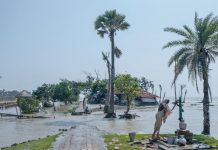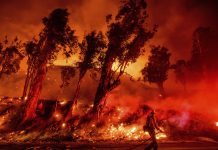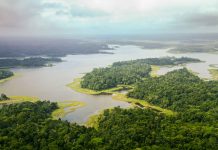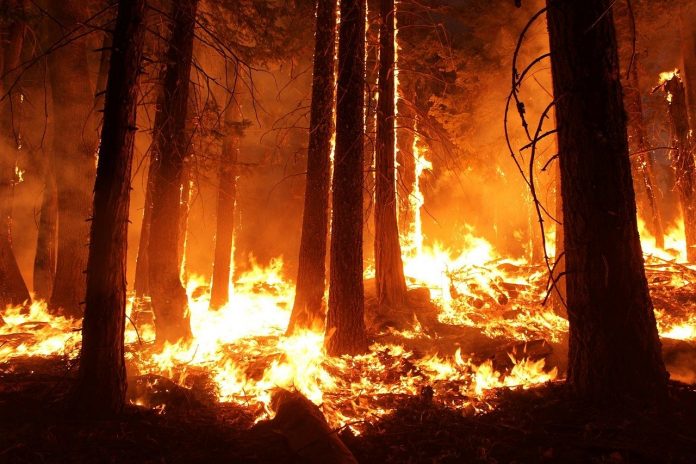Even before the COVID-19 pandemic has taken over the global news, the bushfire in New South Wales in February took our attention as it claimed lives, destroyed homes, and displaced many animals. As flames burned an area the size of South Korea, its smoke made its way to the territory of New Zealand, 1,000 miles away.
A wildfire or what can be described by National Geographic as an uncontrollable fire that often devastates forests, grasslands, savannas, or other ecosystems, can either be man or nature-induced. Wildfires are synonymously interchanged with other terms such as forest fire, grass fire, bush fire, and peat fire. It’s an uncontrolled burning of lands and other areas, the only difference would be what is being burnt (forest trees, grassland, wildland, or woodland). Nevertheless, all of these destroy vegetation and terrestrial habitats. For nature-induced fires, it can be ignited by lightning. However, for man-induced incidents, it can be from a carelessly thrown cigarette butt or just about any spark. However, the way it grows typically depends on weather conditions and topography. With strong winds, high temperatures, fallen leaves, and cut-down trees, it can burn as wide and as fast as New South Wales. This is very dangerous most especially for occurrences near villages or communities as residents can lose home, suffocate, and get trapped. For instance, the recorded Camp Fire in Butte County, California has claimed 86 lives in 2018.
On the other hand, wildfires as a natural occurrence can also contribute to the prospering of ecosystems and the survival of some plants. Cone trees, for example, need heat to release their seeds. The same goes for the scrub oak. These types of plant species essentially need wildfire occurrences to germinate and go through a complete life cycle. Bush fires can also kill insects and some types of diseases that destroy trees. Likewise, a cleared underbrush makes way for new grasses, herbs, and shrubs to grow and flourish. These plants are crucial to feeding animals. Clearly, there is a symbiotic relationship that transpires from these natural occurrences. However, uncontrolled and frequent incidents of these may harm us and the environment. Smoke, soot, and fire remnants can adversely cause health issues, atmospheric heating, and hamper waterways and systems.
Air Quality
Wildfires can adversely affect air quality. As it burns trees and plants, it releases large amounts of smoke and smoke particles that mix with atmospheric gas and water vapor. This amalgamation comes to spread as it travels to great distances. It then threatens human and animal health as inhabitants inhale it and become lodged up inside the lungs. In turn, it blocks the breathing and induces stress to the heart. Additionally, the burning process increases carbon monoxide to the air and similarly causes respiratory diseases.
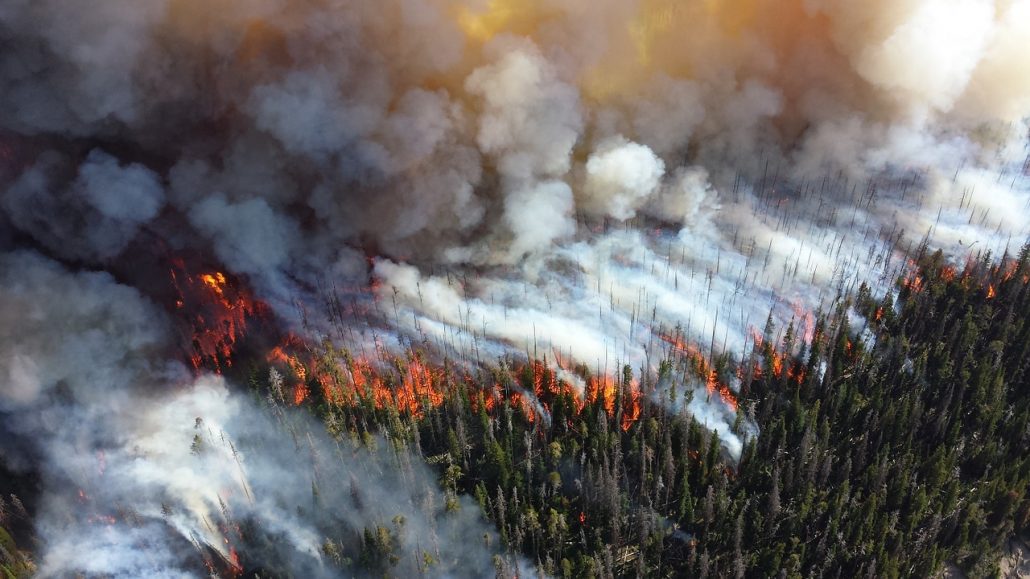
Studies show that wildfires can cause immense amounts of outdoor air particles and air pollutants like carbon monoxide, nitrogen dioxide, formaldehyde, and acetaldehyde to name a few. Therefore, it worsen air pollution that is detrimental to climate change. In the United States alone, wildfires worsens the summertime means of outdoor levels of fine particles by 40%. The U.S. EPA National Ambient Air Quality Standards states that PM10 particle concentrations should not be more than 150 micrograms per cubic meter. During wildfires, it can reach as high as 1,000 micrograms per cubic meters. The same has happened in Indonesia during an extremely long term fire in 2015.
Atmosphere
The burning process increases nitrogen dioxide and carbon monoxide emissions, which contributes greatly to global warming. Particles and other forms of gas from burning biomass are carried by the wind to long distances – countries and lands far away. These particles are distributed to different earth surfaces including snow and ice, which causes the ice to absorb and reflect heat to the Arctic. Likewise, when vegetation is burned, the smoke released to the atmosphere darkens the sky and affects not only our health but visibility as well.
Post-fire effects also last for quite a while. Emissions from decomposing burnt wood even exceed amounts discharged from the fire itself. As reported by the International Energy Agency, scientists have estimated that wildfires brought about approximately 8 billion tons of carbon dioxide per year in the last 20 years. By 2017, total global carbon dioxide emissions are already at 32.5 billion tons.
Today, even the Arctic has been experiencing wildfires. High levels of wildfire activities have been seen by the Copernicus Atmosphere Monitoring Service (CAMS). Satellites have also detected burning episodes in Siberia, Alaska, Canada, and Greenland. Similarly, African countries like Angola suffer from devastation, too. The great wild of Amazon in Brazil was not spared as well. In the tropics, the reported September wild and peatland fires in Kalimantan and Sumatra Indonesia have placed about 10 million children at risk brought about by severe air pollution.
While it is hard to prevent most natural disasters, wildfires can be avoided given that precautionary and preventive measures are observed. Aside from environmental implications, these catastrophes also bring about economic costs that could be a problem for years. Policies and responsible monitoring can greatly decrease or eliminate recurring of frequent wildfire outbreak episodes.
There are many ways to prevent wildfire. One solution is by never leaving any form of fire or burning unattended. This is crucial most especially for camping sites, forest reserves, and mountain trails. Make sure campfires are extinguished completely and properly. Be cautious as to where to discard cigarettes and other flammable items or liquid. If lighting a fire cannot be avoided, ensure that you have water, or a shovel and sand nearby just in case accidents happen.
Should a wildfire occur in your area, immediately get in touch with the local fire department and other authorities. Follow procedures and evacuate as necessary. Know where to go, and always keep an emergency kit and set of supplies on stand by. Make sure you also observe proper safety at home. You never want to be the cause of such tragedy. Before evacuation, check the windows, vents, and doors and make sure everything is shut. Remove combustible materials to prevent further damage.


